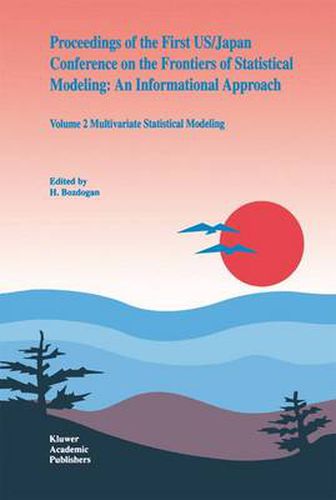Readings Newsletter
Become a Readings Member to make your shopping experience even easier.
Sign in or sign up for free!
You’re not far away from qualifying for FREE standard shipping within Australia
You’ve qualified for FREE standard shipping within Australia
The cart is loading…






This title is printed to order. This book may have been self-published. If so, we cannot guarantee the quality of the content. In the main most books will have gone through the editing process however some may not. We therefore suggest that you be aware of this before ordering this book. If in doubt check either the author or publisher’s details as we are unable to accept any returns unless they are faulty. Please contact us if you have any questions.
Often a statistical analysis involves use of a set of alternative models for the data. A model-selection criterion is a formula which provides a figure-of merit for the alternative models. Generally the alternative models will involve different numhers of parameters. Model-selection criteria take into account hoth the goodness-or-fit of a model and the numher of parameters used to achieve that fit. 1.1. SETS OF ALTERNATIVE MODELS Thus the focus in this paper is on data-analytic situations ill which there is consideration of a set of alternative models. Choice of a suhset of explanatory variahles in regression, the degree of a polynomial regression, the number of factors in factor analysis, or the numher of dusters in duster analysis are examples of such situations. 1.2. MODEL SELECTION VERSUS HYPOTHESIS TESTING In exploratory data analysis or in a preliminary phase of inference an approach hased on model-selection criteria can offer advantages over tests of hypotheses. The model-selection approach avoids the prohlem of specifying error rates for the tests. With model selection the focus can he on simultaneous competition between a hroad dass of competing models rather than on consideration of a sequence of simpler and simpler models.
$9.00 standard shipping within Australia
FREE standard shipping within Australia for orders over $100.00
Express & International shipping calculated at checkout
This title is printed to order. This book may have been self-published. If so, we cannot guarantee the quality of the content. In the main most books will have gone through the editing process however some may not. We therefore suggest that you be aware of this before ordering this book. If in doubt check either the author or publisher’s details as we are unable to accept any returns unless they are faulty. Please contact us if you have any questions.
Often a statistical analysis involves use of a set of alternative models for the data. A model-selection criterion is a formula which provides a figure-of merit for the alternative models. Generally the alternative models will involve different numhers of parameters. Model-selection criteria take into account hoth the goodness-or-fit of a model and the numher of parameters used to achieve that fit. 1.1. SETS OF ALTERNATIVE MODELS Thus the focus in this paper is on data-analytic situations ill which there is consideration of a set of alternative models. Choice of a suhset of explanatory variahles in regression, the degree of a polynomial regression, the number of factors in factor analysis, or the numher of dusters in duster analysis are examples of such situations. 1.2. MODEL SELECTION VERSUS HYPOTHESIS TESTING In exploratory data analysis or in a preliminary phase of inference an approach hased on model-selection criteria can offer advantages over tests of hypotheses. The model-selection approach avoids the prohlem of specifying error rates for the tests. With model selection the focus can he on simultaneous competition between a hroad dass of competing models rather than on consideration of a sequence of simpler and simpler models.